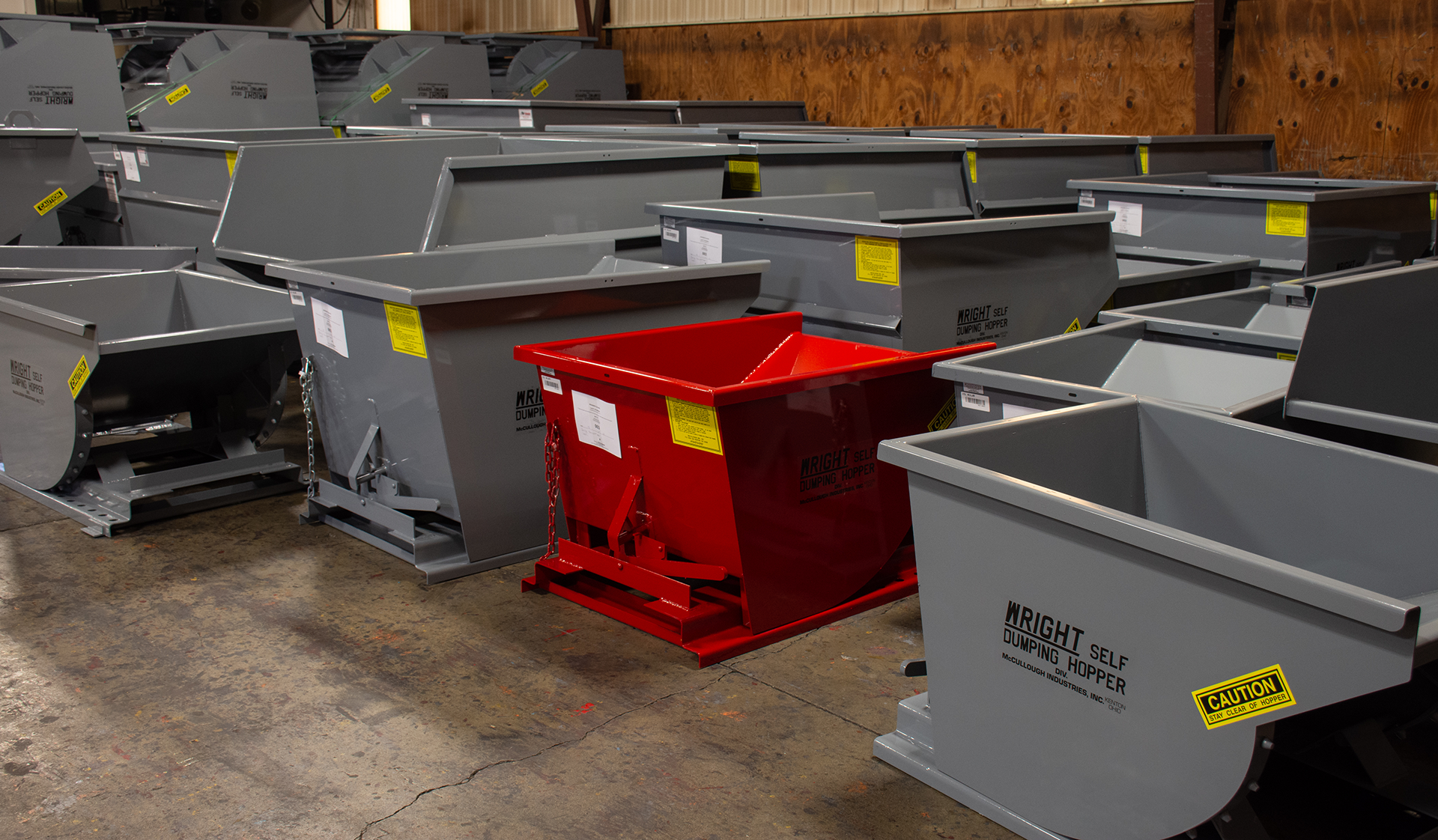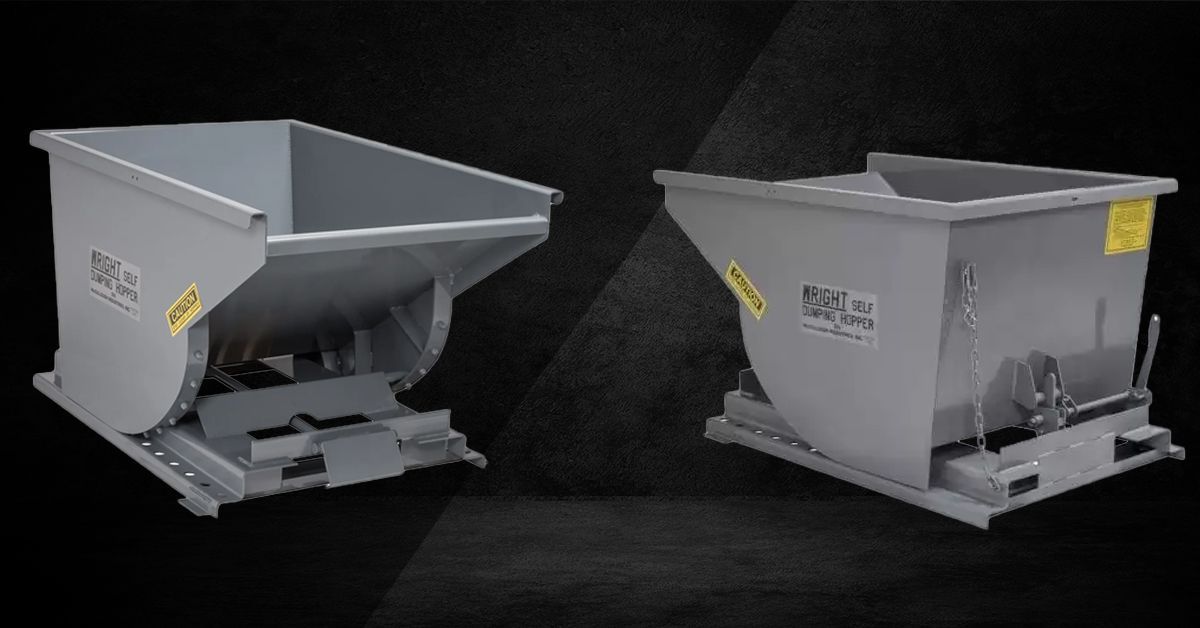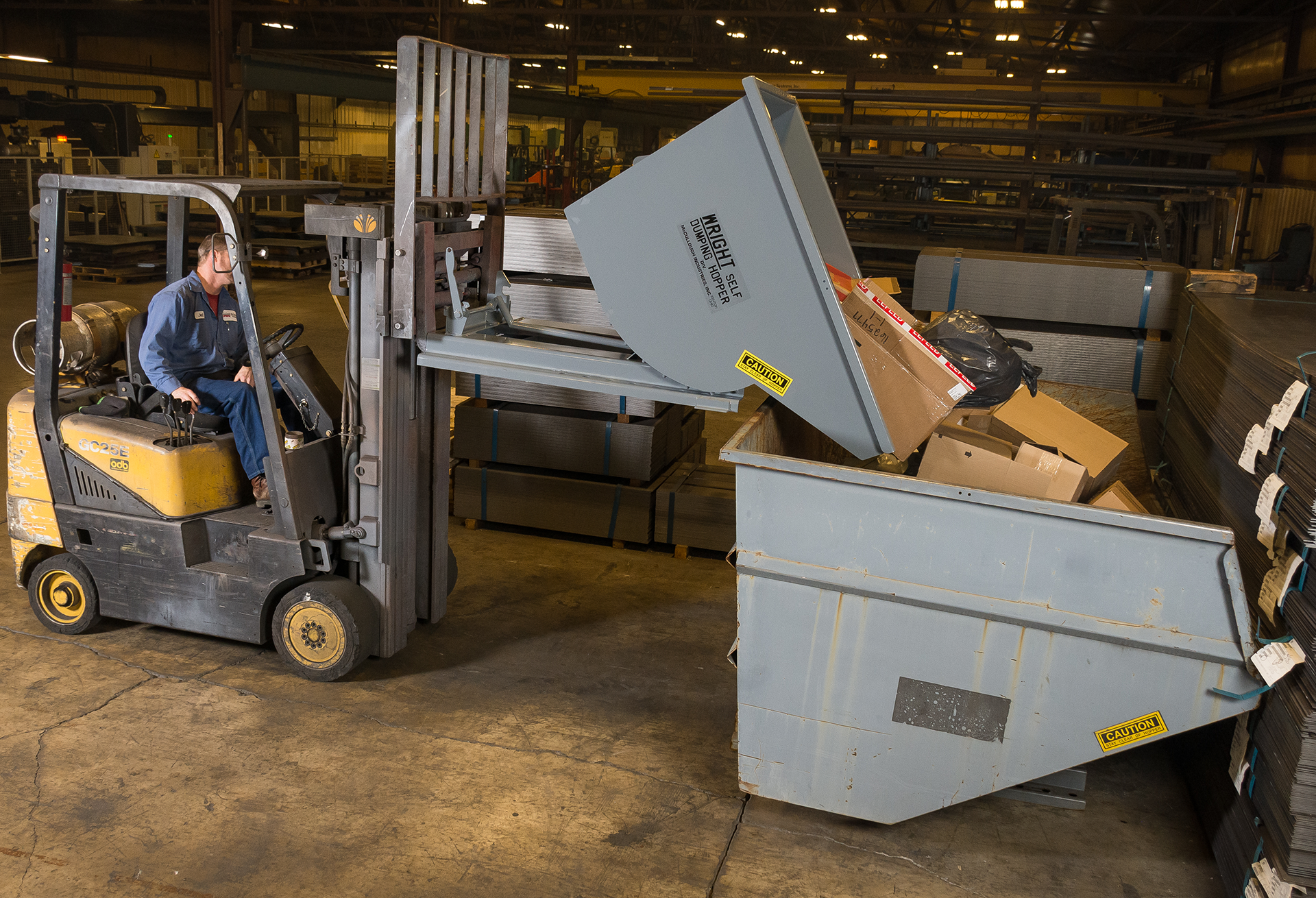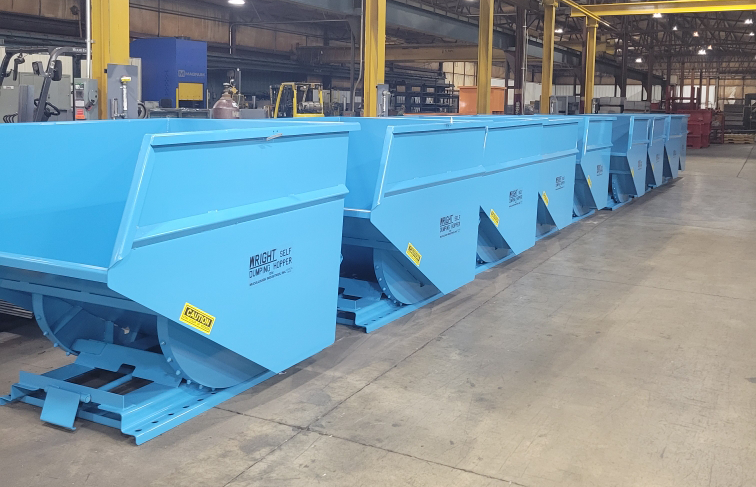
In many industrial environments, material handling is only as efficient as the equipment behind it. Among the most common tools on the shop floor or in a facility yard are hopper containers. While the term "hopper container" sounds straightforward, it covers a wide variety of products that differ in dumping style, mobility, and industry-specific functionality. This blog explores the most common types of hopper containers, their practical uses, and why choosing the right configuration makes a measurable difference in workflow, safety, and durability.
What Are Hopper Containers?
At their core, hopper containers are industrial bins designed to collect, contain, and release bulk materials. What sets them apart from standard storage bins or open dumpsters is their design to facilitate controlled dumping either manually, via forklift action, or through automated release systems. For facilities dealing with metal scraps, manufacturing waste, cardboard, food production byproduct, or even heavy debris, hoppers are essential.
While many buyers refer to these simply as "containers," not all containers are engineered for industrial applications. A true hopper container must do more than hold material it must function as a system that supports efficient disposal, protects operators, and survives the demands of its environment.
The Major Types of Hopper Containers
McCullough Industries manufactures a range of hopper types to suit different operational requirements. While all are steel-constructed and forklift-compatible, each serves a different niche:
Self-Dumping Hoppers (GEN II Line)
These are among the most versatile and widely used. Designed to tip forward and dump materials when triggered, they automatically return to their upright position once emptied. Their wide size range (1/4 to 6 cubic yards) and capacities (4,000 to 7,000 lbs) make them suitable for everything from general warehouse use to heavy scrap handling.
Bump Release Hoppers
Ideal for environments where hands-free dumping is preferred. These models release their load automatically when they come into contact with a roll-off container. Their design helps minimize forklift operator exposure and keeps dumping consistent without manual input.
Low Profile Hoppers
When vertical clearance is limited, low profile hoppers are the solution. Their wide and shallow design allows them to hold volume while staying below height restrictions on production lines or under conveyors. These are especially popular in tight indoor layouts.
Quick Attach Hoppers
Built for use with quick tach plates on front loaders, these hoppers are ideal for mobile, field-based work. They utilize hydraulic mechanisms to allow dumping from the loader seat and are often used in construction or outdoor industrial sites where off-machine time must be minimized.
Stackable Rotating Totes (SRT)
These specialized containers are both stackable and rotatable using forklift-mounted rotators. They're a smart solution for operations with limited storage space and materials that require precise unloading control.
Common Hopper Container Configurations and Features
Hopper containers can be customized to meet a facility's exact needs. This includes not only the volume and weight capacity but also key details that impact day-to-day performance:
- Fork Pocket Dimensions: Proper fork spacing ensures a snug, stable fit on the lift truck. McCullough standard hoppers use 3” x 7.5” pockets.
- Base and Wall Thickness: Thickness affects durability. Many models come in 7-gauge or thicker steel, with optional upgrades for high-impact use.
- Mobility Options: Adding casters can allow floor repositioning without a lift truck. Poly, steel, and rubber options are available depending on load.
- Lid Configurations: Lids help contain material and prevent environmental exposure. Hinged, plastic, and sliding designs are available.
- Coatings & Finishes: Standard gray painted finishes can be swapped for powder coating or custom paint to match branding or resist corrosion.
Matching the Hopper to the Job
Selecting the right hopper isn’t just about volume. It’s about optimizing workflow. A scrap metal yard may require thick steel, bump release designs, and high-capacity builds, while a cardboard handling operation may benefit more from maneuverability, lids, and compact size.
For example, a machining center dealing with oily metal chips would benefit from a 1/2 cubic yard low profile hopper with leak-proof welds and poly casters for mobility. In contrast, a waste sorting facility might need several 2-yard GEN II hoppers with bump-release triggers and steel casters to handle repeated dumps throughout a shift.
Why Purpose Built Designs Outperform General Bins
Off-the-shelf dumpsters or open containers often lack the structural integrity or operator-focused features that modern operations demand. They might require additional equipment or unsafe manual dumping, leading to productivity losses and safety risks. Hopper containers, especially those made by McCullough Industries, are engineered from the ground up to solve those issues.
From reinforced edges to auto-return dump mechanisms, every detail adds value. The added upfront investment in the right hopper design pays off in reduced downtime, fewer accidents, and a longer operational life.
Considerations Before You Buy
When evaluating hopper containers for your facility, consider the following:
- What materials will be stored or dumped? (Scrap, chips, cardboard, liquids?)
- How frequently will the hopper be dumped?
- Will forklifts or loaders be the primary means of movement?
- Do you need manual, bump-release, or quick attach dumping?
- Are mobility and stackability important?
McCullough Industries offers expert support to help you answer those questions and identify the best-fit model from our full line of dumping systems.
Conclusion: Built for Real World Demands
Not all bins are built alike. Hopper containers are more than just industrial storage, they're part of your workflow. Whether you need precision dumping for fine material, rugged construction for outdoor use, or safe handling for workers, the right hopper makes the difference.
McCullough Industries delivers that reliability. With decades of engineering behind every weld and latch, our hoppers are built for performance, tailored for your operation, and ready to work every day.







